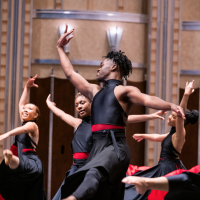Originally posted to this blog: 1/25/08
I just had my socks knocked off by a report to the National Education Association by Lake Research Partners. The report centered on a nationwide survey of likely voters on the importance of imagination and the arts in public education.
The results show there is a distinct “imagination” constituency among likely voters that crosses all genders, races, economic classes and geographic location. Members of this “Imagine Nation” affinity group are more likely to vote for a candidate who supports inclusion of the arts and learning to build the capacity for imagination in schools, and more likely to punish candidates who vote for cutting funding for arts education.
A whopping 87 percent of those surveyed agreed or strongly agreed with the statement, “When integrated with the arts, science, engineering, technology and math provide students with a set of skills and values necessary to promote innovation.” And 88 percent of voters believe an education in and through the arts is essential to cultivating the imagination.
Another poll conducted this past fall by the Partnership for 21st-Century Skills showed that 98 percent of Americans believe that imagination – that is, the ability to visualize new possibilities for thought and action – is critical to innovation and to an individual’s success in a global, knowledge-based economy.
The Arts Education Partnership, a national bipartisan think tank, has begun to compile data and develop the case for “Moving America’s Children Beyond Average.” AEP previewed this material for us late last year when the Cleveland Foundation hosted a meeting for them. The data and findings of AEP’s compiled studies are substantial.
I especially noted the clear definitions they developed for the “habits of mind” nurtured by a study of the arts that resonate positively with the dispositions crucial to student learning, as well as to success in life and the contemporary workforce:
Symbolic understanding: Using multiple modes to represent and communicate ideas and feelings
Imagination: visualizing new possibilities for human thought and action and the use of materials
Creativity: originality, flexibility and elaboration in making what was imagined
Conditional reasoning: theorizing about actions, outcomes and consequences; defining and generating optional approaches and solutions to problems and conditions
Critical Thinking: developing and applying criteria and standards for making judgments about quality
Collaborative learning and action: participating as a contributing member in a group process of acquiring and manifesting knowledge and skills; supporting the conditions for openness and risk taking.
We are finally developing powerful language, backed by solid research, about the value of the arts and their importance to education. This will help us challenge the view that the arts are a “fringe” activity – nice, but not essential.
Finally, there’s a book I have been recommending to everyone I’ve met for the past three years: “A Whole New Mind: Why Right-Brainers Will Rule the Future,” by Daniel Pink. In the book, Pink writes, “The future belongs to a very different kind of person with a very different kind of mind – creators and empathizers and meaning makers. These people – artists, inventors, designers, storytellers, caregivers, consolers, big picture thinkers – will now reap society’s richest rewards and share its greatest joys.”
It’s a good and fast read. I recommend it.
